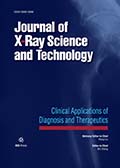Authors: Xu, Xianfeng | Li, Zhenzhou | Liu, Jin | Yu, Sha | Wei, Zhaolian
Article Type:
Research Article
Abstract:
OBJECTIVE: To investigate the microRNA expression profiling in endometriosis-associate infertility, and relationship between the microRNA expression and endometrial receptivity evaluated by ultrasound. METHODS: First, miRNA expression profiling difference of ectopic endometrium between 8 endometriosis patients and 6 endometriosis-free patients were compared. Bioinformatics analyses detected 61 differentially expressed (DE) known miRNAs and 57 DE novel miRNAs. Next, other 24 patients were selected for checking the microRNAs in differential expression by RT-PCR. Among them, case and control groups include 14 endometriosis and 10 endometriosis-free infertility patients, respectively. Last, endometrial receptivity of other 20 endometriosis patients was evaluated by ultrasound.
…In this group of patients, 12 had high endometrial receptivity, in which infertility is caused by fallopian tube occlusion, and 8 had low endometrial receptivity. The study compared endometrial miRNAs expression between two groups, and also evaluated the relationship between the endometrial miRNAs expression and the endometrial receptivity. RESULTS: First, study indicated that “proteinaceous extracellular matrix,” “laminin binding” and “extracellular matrix binding” were enriched in 6 up-regulated miRNA targets, while “cell proliferation” was enriched in the 4 down-regulated miRNA targets. Second, 10 miRNAs in different expression (miR-1304- 3p, miR-544b, miR-3684, miR-494-5p, miR-4683, miR-6747-3p; miR-3935, miR-4427, miR-652-5p, miR-205-5p) were detected by RT-PCR, and the results showed statistically significant differences between 2 groups in all 10 miRNAs. Third, the expression levels of miR-1304-3p, miR-494-5p, and miR-4427 were different between the two groups with different endometrial receptivity. But for the miR-544b, there was no statistically significant difference between two groups. CONCLUSIONS: The study provided a comprehensive understanding to the current knowledge in the field of miRNAs in endometriosis and the relationship between them and the endometrial receptivity. miRNAs could be used as diagnostic biomarkers and therapeutic agents for this disease. The combination of ultrasound and miRNAs detection could be a better choice for the diagnosis of infertility in the future.
Show more
Keywords: Ectopic endometrium, miRNA, endometrial receptivity, ultrasound
DOI: 10.3233/XST-17286
Citation: Journal of X-Ray Science and Technology,
vol. 25, no. 3, pp. 523-532, 2017
Price: EUR 27.50





